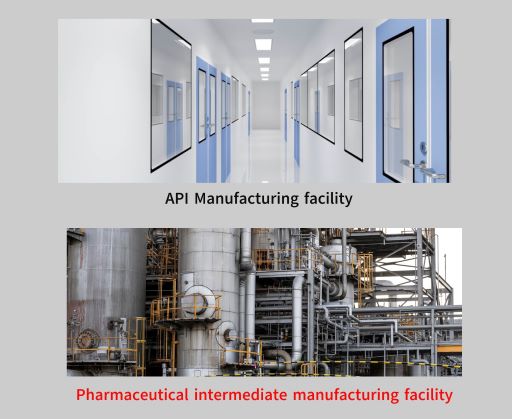
Difference Between API and Pharmaceutical Intermediate
In pharmaceutical production, the creation of medicines depends on the careful synthesis of various chemicals. Two critical components in this process are the Active Pharmaceutical Ingredient (API) and the Pharmaceutical Intermediate. At Chemignition Laboratory, a leader in pharmaceutical research and development, understanding the distinction between these two elements is essential for clients, researcher, and industry partners alike.
In this blog, we will further explore the key differences between APIs and pharmaceutical intermediate, emphasizing their roles, significance, and distinctions in drug manufacturing.
What is an Active Pharmaceutical Ingredient (API)?
An Active Pharmaceutical Ingredient (API) refers to the core component in any pharmaceutical drug responsible for producing the intended therapeutic effect. Essentially, APIs are the biologically active substances in medicines that directly address specific conditions or diseases.
Key Characteristics of API:
- Therapeutic Effect: APIs directly deliver the desired medical impact, whether it’s reducing pain, treating infections, or managing chronic conditions.
- Regulatory Approval: APIs must comply with strict regulatory standards, such as those set by the FDA, to ensure their safety, quality, and efficacy.
- High Purity: APIs are produced in their purest form and undergo rigorous testing to maintain consistent quality throughout the drug production process.
Examples of API:
- Adapalene: A topical retinoid widely used for treating acne vulgaris. It belongs to a class of drugs called retinoids, which are derivatives of vitamin A.
- Aluminum Hydroxide: An inorganic salt used as an antacid to reduce acidity in the gastrointestinal tract.
- Clotrimazole: An antifungal medicine that prevents fungal growth and yeast infections.
- Quinine Hydrochloride: An antimalarial drug that kills malaria parasites and prevents their growth in the body.
Explore a leading manufacturer of APIs.
With over 10 years of expertise, we ensure GMP compliance and provide reliable, high-quality solutions.
What is a Pharmaceutical Intermediate?
A Pharmaceutical Intermediate, on the other hand, is a chemical compound used as a precursor in the synthesis of an API. It plays a critical role in the production chain but is not the final active ingredient. Instead, intermediates undergo chemical reactions and refining processes before eventually converting into APIs.
Key Characteristics of Pharmaceutical Intermediate:
- Transitional Product: Intermediates are part of the API manufacturing process but don’t have any direct therapeutic effects.
- Raw Material for API Production: These compounds are essential for synthesizing APIs through various chemical reactions.
- Less Regulation: Intermediates are not subject to the same stringent regulatory requirements as APIs, although quality control remains important.
Examples of Pharmaceutical Intermediate:
- Adapalene Pharmaceutical Intermediate: 6-[3-(1-Admantyl)-4-methoxyphenyl]-2-naphthoic acid is a key intermediate in Adapalene production.
- Aluminum Hydroxide Pharmaceutical Intermediate: Alumina (aluminum oxide) reacts with water under specific conditions to produce Aluminum Hydroxide.
- Clotrimazole Pharmaceutical Intermediate: 2-Chlorotrityl Chloride and 2-(2,4-Dichlorophenyl)-2-(1H-imidazol-1-ylmethyl)-1,3-dioxolane are key intermediates in Clotrimazole synthesis.
- Quinine Pharmaceutical Intermediate: This compound serves as an important intermediate in the manufacturing of Quinine Hydrochloride API.
Key Differences Between APIs and Pharmaceutical Intermediates
| Aspect | API | Pharmaceutical Intermediate |
|---|---|---|
| Function | API Provides therapeutic effect in medicines | Pharmaceutical Intermediate stage in API production |
| Regulation | API Subject to strict regulatory control and testing | Pharmaceutical Intermediate Less regulatory oversight |
| Therapeutic Value | API Directly responsible for treating diseases | Pharmaceutical Intermediate, No therapeutic value on its own |
| Purity Level | API Highly purified for medical use | Pharmaceutical Intermediate, Less refined, undergoes further processing |
| Final Product | API Found in the finished pharmaceutical product | Pharmaceutical Intermediate, A precursor to the API in drug manufacturing |
Importance of APIs and Intermediates in Drug Manufacturing
Both APIs and Pharmaceutical Intermediates play crucial roles in the pharmaceutical manufacturing process. Intermediates act as essential building blocks for APIs, facilitating the complex chemical processes involved in API production. APIs, on the other hand, serve as the final active ingredients, ensuring the efficacy and safety of medicines.
At Chemignition Laboratory, we specialize in synthesizing high-quality APIs and intermediates, adhering to global regulatory standards. Our commitment ensures that clients receive consistent, top-tier products, whether they require bulk API supply or custom intermediate production.
Conclusion
Understanding the difference between Active Pharmaceutical Ingredients (APIs) and Pharmaceutical Intermediates is crucial for professionals in the pharmaceutical industry. APIs are the end products that provide therapeutic effects, while intermediates serve as important stepping stones in drug development. At Chemignition Laboratory, we are proud to contribute to both areas, ensuring the highest standards of quality, purity, and regulatory compliance.
By recognizing the distinct roles of APIs and intermediates, industry professionals can better navigate the complexities of pharmaceutical manufacturing and ensure the successful creation of safe and effective medicines.
Chemignition Laboratory is a globally trusted manufacturer and exporter of high-quality Active Pharmaceutical Ingredients (APIs).
We specialize in ophthalmic APIs and provide complete documentation support including,
- GMP Certificate
- ISO 9001 Certificate
- COA
- MSDS
- Stability Data
- Impurity Profile
- Customized packaging
- Cold chain logistics
- Safe delivery of sensitive APIs
We proudly supply high-quality Active Pharmaceutical Ingredients (APIs) to pharmaceutical companies around the world.
Partner with Chemignition Laboratory for consistent quality, regulatory compliance, and reliable global delivery.
Contact us at www.chemignition.com
FAQs
What is the primary difference between APIs and Pharmaceutical Intermediates?
APIs are the active components in medicines that deliver therapeutic effects, while pharmaceutical intermediates are chemical compounds used as precursors in the synthesis of APIs.
Are APIs and Pharmaceutical Intermediates subject to the same regulations?
No, APIs are subject to strict regulatory standards like those from the FDA to ensure their safety, quality, and efficacy. Intermediates, however, are not as heavily regulated but must still meet quality control standards.
Can Pharmaceutical Intermediates be used directly as medicines?
No, pharmaceutical intermediates do not have therapeutic effects and are not used directly in medicines. They require further processing to become APIs.
Why are APIs highly purified compared to Intermediates?
APIs are the final active ingredients in medicines, requiring high purity to ensure safety and effectiveness. Intermediates, being precursors, undergo further refining during API production.
Are APIs and Intermediates produced in the same facility?
While they can be produced in the same facility, facilities manufacturing APIs typically have stricter regulatory requirements and quality control protocols.
Do APIs and Intermediates require different storage conditions?
Yes, APIs often require specific storage conditions to maintain their stability and efficacy, while intermediates may have less stringent requirements, depending on their chemical properties.
What industries rely on APIs and Pharmaceutical Intermediates?
The pharmaceutical industry heavily depends on both APIs and intermediates for drug development and manufacturing. Additionally, biotech and chemical industries may utilize intermediates for specialized applications.
Can Chemignition Laboratory provide customized intermediates for specific APIs?
Yes, Chemignition Laboratory specializes in synthesizing both bulk APIs and custom intermediates tailored to specific client requirements, adhering to global quality and regulatory standards.



